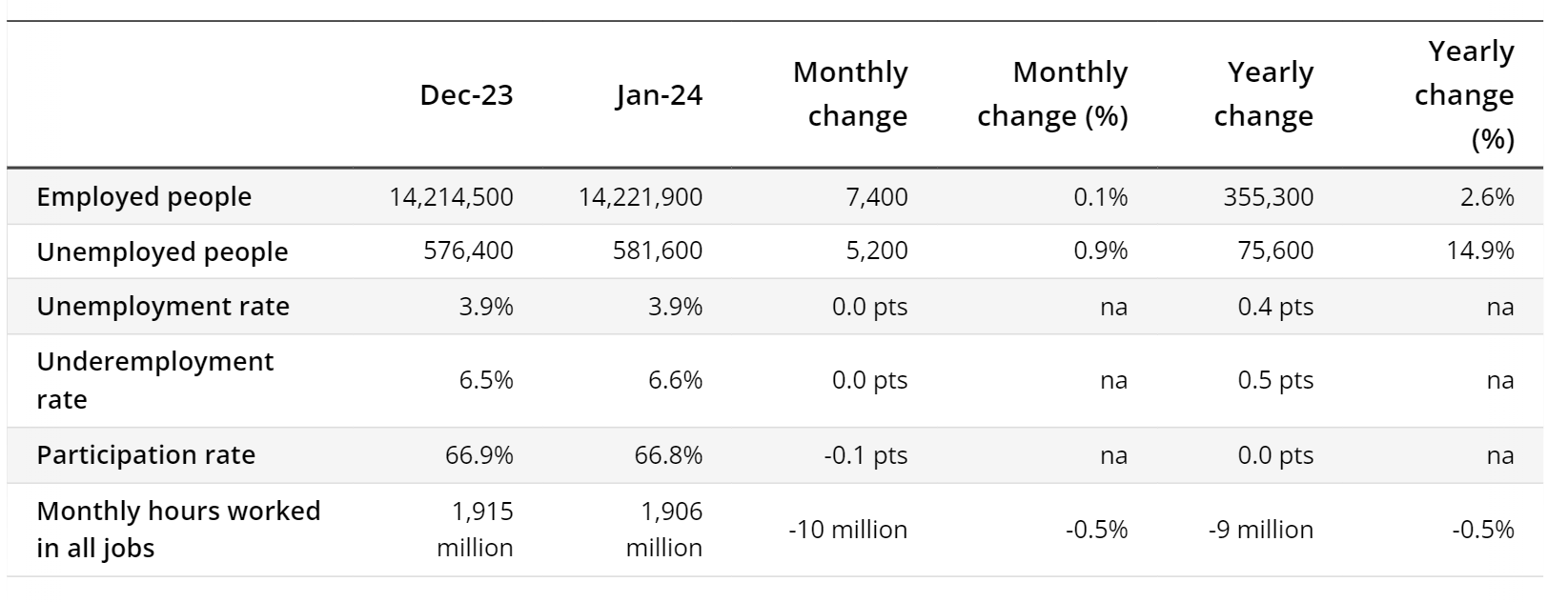

Australia's unemployment rate has lifted to 4.1% in January, an uptick of 0.1 percentage points and a rise of 22,000 unemployed people after a stable employment period, the latest ABS figures have shown.
This marks the first instance since January 2022 that the unemployment rate has exceeded 4%.
Bjorn Jarvis (pictured above), ABS head of labour statistics, highlighted the unique seasonal pattern observed in January over the past three years, with an increase in Australians not currently employed but expecting to start work soon.
“While there were more unemployed people in January, there were also more unemployed people who were expecting to start a job in the next four weeks,” Jarvis said in a media release.
“This may be an indication of a changing seasonal dynamic within the labour market, around when people start working after the summer holiday period. In January 2022, 2023, and 2024, around 5% of people who were not employed were attached to a job, compared with around 4% in the January surveys prior to the COVID-19 pandemic.”
Despite the uptick in unemployment, the participation rate in January remained constant at 66.8%, and the employment-to-population ratio slightly decreased to 64.1%. These figures are still near historical highs and well above their pre-pandemic levels.
In January, seasonally adjusted monthly hours worked decreased by 2.5%, reflecting the common trend of taking annual leave during this period.
“Compared with January surveys before the pandemic, we again saw a higher proportion of employed people working no hours because they were on leave,” Jarvis said. “We have seen a similar pattern in recent January surveys, which may point to further changes in labour market dynamics around the summer holiday period.”

The decrease in hours worked in January extended the trend of gradual slowdown observed since mid-2023.
“Since October 2023, the annual growth rate in hours worked has slowed considerably, down to 0.7% in January 2024, and well below the annual employment growth of 2.6%,” Jarvis said.
The seasonally adjusted underemployment rate increased by 0.1 percentage point to 6.6%, 0.8 percentage points above its recent February 2023 low, yet 2.1 percentage points below the level of March 2020.
Meanwhile, the underutilisation rate, encompassing both unemployment and underemployment rates, climbed by 0.3 percentage points to 10.7%, which is 1.4 percentage points above its November 2022 nadir of 9.3% but still 3.2 percentage points beneath pre-pandemic figures, ABS reported.
Trend data for January showed the unemployment rate steady at 3.9%, with employment growing by 7,000 people (0.1%).

Meanwhile, there was a 0.5% decline in hours worked. There were also decreases in the employment-to-population ratio, by 0.1 percentage point to 64.1%, and the participation rate, which similarly dropped by 0.1 percentage point to 66.8%.
The underemployment rate stayed steady at 6.6%, while the underutilisation rate increased slightly by 0.1 percentage point, reaching 10.5%, ABS reported.
“The increasing unemployment and underemployment rates since late 2022, along with the recent falls in the participation rate and employment-to-population ratio, all point to a slowing labour market during 2023-24,” Jarvis said.
“However, it’s important to remember that this slowing follows a particularly tight labour market during 2022-23.”
For more information, refer to Labour Force, Australia, January 2024.
Get the hottest and freshest mortgage news delivered right into your inbox. Subscribe now to our FREE daily newsletter.
